
Image via Wikipedia
One of the big topics of discussion swirling around minimalist running shoes right now is whether they increase the likelihood that a runner might experience a stress fracture. Clearly, fractures of the 2nd metatarsal are occurring in individuals who give minimalist running a try (for example, check out this great post by Joe Maller), but it’s also important to keep in mind that this is the most common type of foot fracture in shod runners as well. The big question, for which we don’t yet have an answer, is whether incidence is in fact higher among minimalist runners.
Anecdotal reports from some medical professionals suggest that injuries resulting from minimalist running have exploded over the past year or two. To a certain extent it wouldn’t surprise me at all if this were true. Runners are notorious for jumping on new trends and doing dumb things in their training, and the exuberance with which some have approached minimalist running is likely to be a big factor in causing these injuries (as I suspect it was in the two cases reported by Giuliani et al., 2011). The body needs time to adapt to any major change in footwear or training, and someone who has been running their entire life in cushioned shoes is going to need to take it really slow at first in a shoe like the Vibram Fivefingers until the bones can strengthen (look up Wolff’s Law if you’re interested in this – I teach about it every year in my Human Anatomy and Physiology class).
As an analogy, suppose you do all of your miles in the form of long, slow distance. One day, you hear that interval training is really where it’s at if you want to improve your performance, so you start hitting the track and running hard intervals 2-3 times per week. What’s going to happen? My bet is you get injured, simply because you jumped into speedwork too quickly and didn’t let your body adapt to the new type of training.
Given the above, I think there are a number of significant questions that need to be answered regarding the metatarsal stress fracture issue. Among these are:
1. Is incidence truly higher among minimalist runners? Hard numbers are needed here, as anecdotal evidence points in both directions depending on who you ask.
2. If incidence is higher among minimalists, when do these fractures most commonly occur? In other words, are these mostly transition injuries that occur because people apply a new stress to quickly to their body without allowing time for adaptation? For more on this, read my post on repetitive overuse injuries in runners.
3. Which shoes are most frequently associated with this problem? Most commonly I see the Vibram Fivefingers referenced and not something more moderate like the Saucony Kinvara. Minimalist shoes come in a variety of types, and some may require more care than others.
4. What type of stress typically causes these injuries? Is there something specific about minimalist shoes or the type of gait that they encourage that makes a stress fracture more likely?
 I’ve thought a lot about these questions, and have some thoughts on each, but for this post I wanted to concentrate on point number 4. To do this, I solicited the help of Dr. Casey Kerrigan (see photo to the left), who has published over 90 peer-reviewed papers on walking and running gait (with a particular interest on the causes of osteoarthritis). Casey has an amazing background and an immense amount of clinical experience – she founded the gait labs at both Harvard and the University of Virginia. Recently, Casey took the amazing and gutsy step of resigning from her tenured faculty position at the University of Virginia so that she could start a shoe company called OESH. She had come to the point in her career where she felt that she could have a more positive impact on the well-being of her patients by developing a shoe that works rather than by spending her days in the clinic or publishing papers. As a fellow tenured college professor, I can assure you that one does not give up a job like this without great risk (both professional and financial), and I’m incredibly impressed by willingness to make such a move.
I’ve thought a lot about these questions, and have some thoughts on each, but for this post I wanted to concentrate on point number 4. To do this, I solicited the help of Dr. Casey Kerrigan (see photo to the left), who has published over 90 peer-reviewed papers on walking and running gait (with a particular interest on the causes of osteoarthritis). Casey has an amazing background and an immense amount of clinical experience – she founded the gait labs at both Harvard and the University of Virginia. Recently, Casey took the amazing and gutsy step of resigning from her tenured faculty position at the University of Virginia so that she could start a shoe company called OESH. She had come to the point in her career where she felt that she could have a more positive impact on the well-being of her patients by developing a shoe that works rather than by spending her days in the clinic or publishing papers. As a fellow tenured college professor, I can assure you that one does not give up a job like this without great risk (both professional and financial), and I’m incredibly impressed by willingness to make such a move.
I asked Casey if she would be willing to share her thoughts on what might be causing these stress fractures – here was her response:
Dr. Casey Kerrigan on Metatarsal Stress Fractures
My thoughts below are based on the biomechanical research I’ve done on walking, running and the (ill-effects) of current shoe designs. To learn more about my research and how that led me to re-think the midsole of an athletic shoe and start a shoe company, go to OESH Shoes. Don’t worry – I’m not trying to sell shoes here – what I have available now is a limited, high-demand, women’s all purpose athletic shoe that is not specific to running.
Let’s start with a post by Joe Maller and the comments that followed it suggesting that these second metatarsal stress fractures seem to be occurring with some amount of frequency in runners who are running in minimalist shoes. Pete was also kind enough to give me a heads up, sending me over this just published case report by Giuliani et al., which describes the occurrence of this fracture in two runners wearing Vibram Five Fingers. My physician colleague, Bob Wilder, who now has my old job as professor and chair of the department of physical medicine at the University of Virginia, and has a clinical practice made up almost exclusively of runners, told me he’s seen only two cases this past year but admits he hasn’t seen a lot of patients in his clinic running in minimalist shoes.
I can add my own close to home experience… one of my daughters, Kellyn, who is 13, had one. She greatly enjoys running and has been running her whole life either barefoot or in assorted racing flats that over the years I would scrupulously check to make sure they had no raised heel or arch support. There was no way, I as her mother, with all that I knew from my studies, would ever let her wear traditional running shoes. Now that she’s big enough to wear OESH, that’s what she trains in and only wears flats (track spikes – without the spikes) when racing.
Back to Joe Maller’s post. His theory and his nice cartoon video about how these fractures are happening is not that far from what my research would indicate. Joe believes, and I agree, that these fractures are occurring later in stance, not at impact as Giuliani et al. suggests. But before I delve into my analysis, I need to first review why I believe most all injuries, not just this particular one, occur when the foot is fully planted during midstance, not at impact. From there I can explain why the second metatarsal seems to be more vulnerable than other areas in runners who are running in minimalist shoes.
For years, I’d been putting together force plate data with 3-D motion analysis data in walking. Combining these data and evaluating them in light of our clinical information (all the problems that came to our general clinic or to our specific runner’s clinic), we could finally understand how and why we get the types of repetitive injuries we do. Remarkably, this had never been done before. You could say that the “a-ha” event of all my best research was synthesizing the force plate data with the 3-D motion data—this was the classic 1 + 1 = 3 breakthrough that every researcher hopes to discover. If you’re interested you can read more about all this in my post The Rest of the Story.
I first started looking at the forces associated with knee osteoarthritis. But what I found applies to nearly all of the typical injuries we see. The peak forces stressing nearly all the injury sensitive areas of our body occur when our foot is fully planted (not at impact) and fully pronated. The specific forces at the moment of impact are miniscule and sometimes in the complete opposite direction to where injuries occur. More critically, the forces across virtually every injury prone area are highest at two points in walking that occur well after impact – when loading weight onto the foot and when lifting the foot off. These injurious forces peak at one point in running – at midstance, well after the peak impact force.
Our findings are quite logical when you think about them – we’re at risk for injuries when we also have to support and transfer our full body weight. But they really do fly in the face of what everyone, (including the athletic shoe industry) has always promoted – that foot impact is what causes the really bad things that happen to bones and joints, such as stress fractures and osteoarthritis. To this, I like to say that the only way a cushioned athletic shoe can protect you from injury is if you are in a car accident and happen to have them strapped around your head.
What is the effect of a traditional running shoe at this critical moment when we’re fully supporting and transferring our body weight and are at risk for nearly every single common running injury, second metatarsal fracture included? The raised cushioned heel and arch support / motion control features that are both inherent to every traditional athletic shoe (not just motion control shoes) essentially freeze out the foot’s natural function in providing compliance that helps protect the rest of the body. Also, the cushioning, which doesn’t really give back in any physiologically meaningful way, just makes it harder to transfer the body weight, which increases peak joint torques at this critical moment.
If you are running barefoot or in minimalist shoes, your foot is going to be freed to provide compliance at this critical moment. We’ve demonstrated that the foot arch compresses and releases in perfect harmony with the rise and fall of the peak body weight force. Of course, that compliance is good – it protects your body north of the foot from all the major injuries at that time. It also healthfully exercises your plantar fascia and foot intrinsic muscles. Good, good, good! But it does put more stress through the second metatarsal than there ever was before.
Again, back to Joe’s theory. The stress is occurring around midstance or perhaps a little after, at the time when the foot, and more specifically the foot arch, is providing maximal compliance and then springing back. Joe depicts in his video cartoon the stress to be associated with quite a bit of movement but in fact, there really isn’t that much movement then. It’s really the forces, not so much the movement, that is responsible for the fractures.
One reason that it seems to be occurring more often when wearing minimalist shoes compared to running completely barefoot is that folks wearing minimalist shoes take longer strides compared to running completely barefoot. But note, I don’t think it’s the harder heel strike associated with shoes that is directly causing injury. Rather, it’s that the longer stride length causes higher forces at midstance. Again, the physics of bearing all that body weight trumps the modest forces at impact. Also, whatever cushioning there is in a minimalist shoe makes it harder, not easier, to transfer the body weight at midstance. Thus a minimalist shoe that has cushioning but lacks a heel or arch support / motion control ends up putting the greatest stress on the second metatarsal because the lack of those two things frees up the foot while the cushioning simultaneously puts greater demands on it.
Now, how do you minimize this risk?
After all that, my advice probably sounds a lot like what you’ve already heard. You should transition slowly from your current traditional shoes to running barefoot or in minimalist shoes. You need to do this very slowly (as much as I hate the thought of you continuing to place more torque than necessary at your knees with traditional or just moderately minimal shoes), probably over a few months.
A bit concerning is that it seems that these fractures can occur months after you’ve made the transition. Also, my daughter’s experience makes me especially concerned about adolescent girls and young women who are at greater risk for stress fractures in general than the rest of the population… I suspect that running in minimalist shoes, especially on non-compliant surfaces (see below), places them at greater risk than the rest of the population for a second metatarsal fracture.
So what else can you do? Besides the obvious of making sure you’re eating well and getting enough calcium and Vitamin D for good general bone health? And not increasingly mileage too quickly (a general rule is to not increase your mileage by more than 10% per week)? You might look to see if you can find a compliant but not foamy soft surface to run on (see my post on the Harvard Indoor Track to see the distinction of compliant but not soft which I think can be found in a lot of natural surfaces). Unlike foam in a shoe, a compliant surface that truly compresses and releases in tune with the rise and fall of the peak forces can reduce injury.
I would avoid a minimalist shoe that has any kind of cushioning (as I think that maximally stresses your second metatarsal) especially if you are recovering from a stress fracture or develop any “top of the foot” pain. Finally, while this isn’t a problem when running completely barefoot, as it is when running in minimalist shoes, I think you need to work extra, extra hard to take shorter strides than you normally feel comfortable doing. Of course, this advice goes for traditional shoes as well.
Runblogger’s Thoughts: For me, one of the key take-home messages here is that it’s not impact that is causing these fractures in the metatarsals, but rather stresses in the metatarsal shaft that occur during mid to late stance as body weight passes over the foot and the heel begins to come up off of the ground. In addition to shortening stride and taking a gradual approach, a third piece of advice might be to avoid pushing off too hard when running in very minimal shoes!
Casey’s anecdote about the UVA gait lab not seeing many stress fractures caused by minimal shoes is also worthy of note – you see different reports from different people. This is why this issue needs to be looked at in more detail.
An interesting personal note is that I often find that I get an ache under my second metatarsal on my right foot if I run long in my Vibram Bikilas. One of the things I have noticed is that because my toes touch the tips of the toe pockets, it can be very hard to flex them while I’m running (somewhat paradoxically, toe movement actually seems more restricted to me in these shoes – may be a fit issue), and by the end of a long run I’m desperate to take my shoes off so that I can wiggle my toes up and down. Part of me wonders if this might be a common experience, because an inability to push down with the toes may put added stress on the metatarsal heads (since the toes can’t share the burden), which in turn causes greater bending forces on the metatarsal shafts during stance. I don’t have this problem wearing other shoes without the toe pockets since my toes have greater freedom of movement in a one-fingered toebox.
That’s it for now, we’d love to hear if anyone else has thoughts on the stress fracture issue!


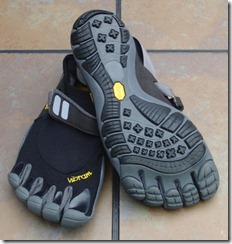
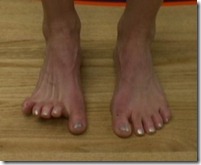

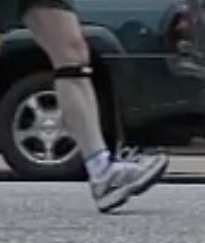


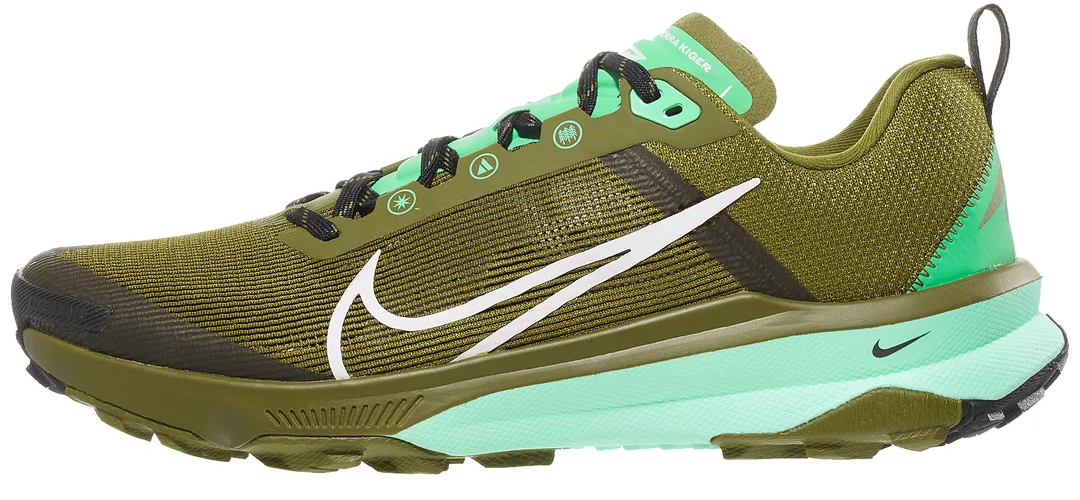
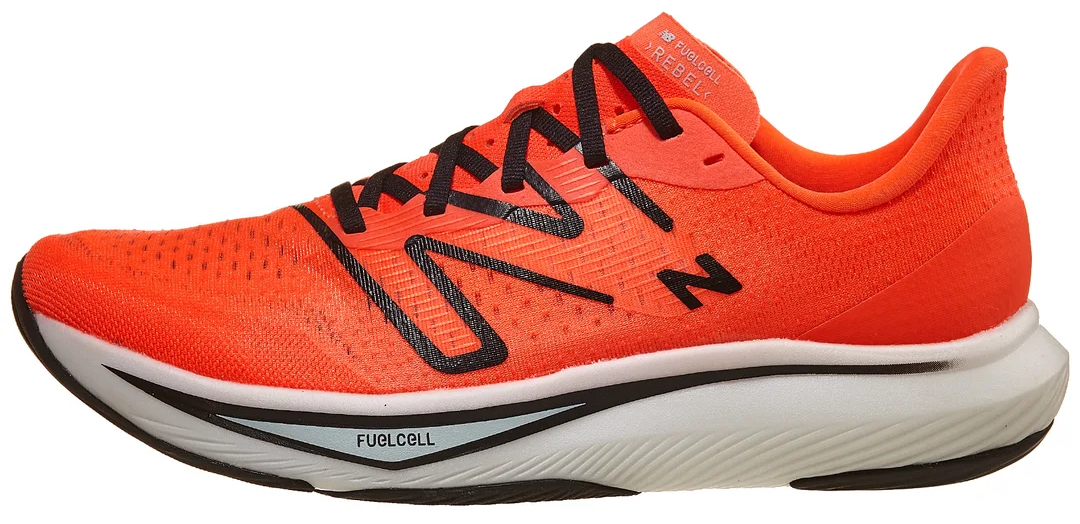






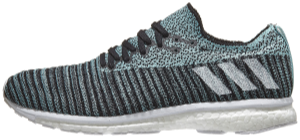
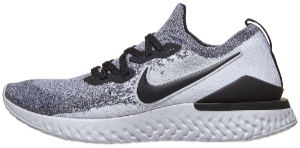


Hello, i thought i had a metatarsal stress fracture, i am transitioning from heel to forefoot running and have been using kinvaras for all my runs. What i did find out is that the top of foot pain can also be a extensor tendonitis which has similar symptoms. Glad it wasn’t a stress fracture and now i am back to marathon training. Your website is great, thanks for all the useful info. Dave
Interesting topic regarding a foot injury I see quite often. I can’t however comment on wether the stress fractures I end up seeing are in minimalist runners or not as I do not see the patients themselves but rather the films so I lack the appropriate history. There are actually two different types of stress fractures that are more commonly seen. There is an entity known as the March fracture, involving the distal aspect of the metatarsal, called the March fracture due to the occurence in new military recruits. This is most common in the second metatarsal but can occur in any metatarsal. There is also the Jones fracture specific to the fifth metatarsal. These have been described in individuals ranging from military recruits, to hikers, to doctors who spend a great deal of time on their feet or walking. All these activities indicate a component of increased stress over a protracted period of time, likely in a bone that has not become accustomed to the increased stresses. Interestingly I have seen two of these fractures in two separate radiology residents, one in a resident who just started jogging again and the second who just spent the day walking in NYC for several hours. Mind you, we radiologist spend most of our time seated in front of a monitor interpreting films and not standing or walking.
I believe that the second metatarsal will often be more commonly affected in certain individuals who have an elongated second ray, thus predisposing to increased stresses during normal gait. The fifth ray may also be more predisposed as we tend to see midfoot contact along the lateral aspect of the foot at touch down. (as a sidenote, I am currently having some pain along the fifth ray after a prolonged run around my pool barefoot with my 4 year old) I further believe that shoewear will cause the foot to adapt to stresses. Just as I see disuse osteopenia occur in patients who suffer from limited weightbearing due to injury, I believe that this occurs on a smaller scale in people who are chronically shod. If this individual then goes on to a rapid transition to minimalist running they will likely suffer the consequences. It usually takes a week to see disuse osteopenia in patients who are casted whereas it takes months to gain back the bone mineralization following injury and return to function, Wolff’s Law in full effect there.
It is not surprising that the trend in minimalism will lead to more of these injuries. My hope is that these injuries do not lead to the misperception that minimalism leads to more injuries ( I can see some shoe companies adopting that “see…told you so” attitude when reading these papers). Traditional running shoes share some of the blame in this as our feet adapt to the increased cushioning. I hope to put some images together and share them with you showing some examples of disuse osteopenia and stress fractures as I believe in my line of work, a picture is worth a thousand words.
Interesting. Here’s my 3 week old Fifth Mety Jones fx link to facebook.com…
Andrew-
Thanks for the comment, your expertise as a radiologist is much appreciated.
One of the things that is interesting about these fractures is that they
seem to more often be diaphyseal fractures of the 2nd metatarsal rather than
something like the March fracture at the distal end that you describe. This
is why I suspect bending stresses to play a big role here, particularly as
the heel lifts off the ground during mid to late stance of the gait cycle.
I’d be curious to know if they are more common on the top or bottom of the
met – the former would seem to be a compressive fracture, whereas the latter
would be caused by tension on the underside of the bone. In either case, it
seems that given time, the bone will remodel to accommodate these stresses.
Your point about the elongated 2nd met (Morton’s toe?) also syncs well with
this, as bending would be more concentrated there if the head of met 2 was
further forward than surrounding met heads during pushoff.
I’m curious, do you know the typical time course for remodeling to occur in
bone? My understanding of the process is that osteoclastic activity will
initially make the bone weaker for a period of time before new bone is laid
down so that it gets stronger. I’m wondering if there is a window during
which extreme care should be taken, and I’m guessing it is on the order of
at least several months.
It would be great if we could come up with a list of risk factors for these
fractures – elongated 2nd toe, spending all day shod (with associated bone
weakening), elongated stride, excessive pushoff, etc. I have also seen
restricted dorsiflexion of the foot mentioned as a possible risk factor – if
the ankle can’t dorsiflex sufficiently during stance, this could place
additional bending stress on the mets.
Pete
@Pete: Fractures from bending would also have somewhat of a Lis-Franc element to it? Maybe from over extension at toe off???
Pete,
I pulled a few article today to address the questions you have and will put together a response with some references to the current literature once I read through some of them. I think you and your readers would be interested in some of the science behind the topics you regularly cover.
Andy
Very interesting point of view. I encountered this particular fracture while training for a marathon wearing VFF. The fracture occured after more than 500 kilometers in VFF, on roads (hard surface) only, which seems to confirm what Casey is saying.
A few years ago, I was transitioning to a midfoot landing (not going to minimal shoes). After making that initial transition, I eventually got to where I was training and racing in Nike Waffle Racers.
I had what was first thought to be a stress fracture, and after some 3 months, and getting to some one who knew about such things, it was correctly diagnosed as Frieberg’s Infraction. Essentially, due to my calf-dominant running gait, I was destroying the base toe joint at the 2nd metatarsal head (left foot). I had surgery to correct that, and after two years of rehab, and then failed attempts to start running again, I finally got to where I could run. And soon to follow were the initial symptoms of the Frieberg’s in my right foot. That is when I really re-tooled my gait, going to a fully midfoot landing and going hip- and hamstring-dominant rather than calf-dominant. Textbook barefoot form.
It’s made all the difference in the world.
I did a blog post about this some time back:
http://welcome-to-briders-plac…
Pete, regarding the issue of constriction of your toes and metatarsal pressure, Mueller published a study looking at peak plantar pressures (in a specific, non-running population- diabetics, but the mechanics still apply) – much greater plantar foot pressures occur under the MPJ’s when the MPJ is flexed (hammer-toes in that study) – the application to runners would appear to be that constricting MPJ motion (such as in a too-short toe pocket in a five-fingers) would overload the MPJ’s (link to jbiomech.com…
Howdy Dr. Pete!
As an avid wearer of FiveFingers (I still shudder calling them that. They are toes after all, correct???) I can attest to the problems with fitment, specifically the toes. I have taken to the Bikila and the Bikila LS, but with either pair I need to wear Injinji socks due to blistering in the arch area. Without the socks I still have issues with the toes being a little constrictive, so you can imagine the problems with any extra layers on my feet! I wouldn’t say I’ve had any fractures to report, but I have had episodes of “top of foot” soreness that I alleviated (er, eliminated) by cutting off the straps of the Bikila. I bought a 42 and they fit snug across the foot, so they stay on even without the strap. I think the soreness stems from tightening a strap with minimal cross sectional area, so the amount of stress placed on the metatarsals (and their relavent connective tissues) is amplified because the stress of securing the strap is not dispersed over a wider area. But with the staps nonexistent, so too is the accompanying soreness! Winning!!!
The toes do feel numb after about an hour or so, and I’ve been adding barefoot runs here and there (no more than 2-3.5 miles a few times a week) and I’ve noticed that my dress shoes do not fit anymore…it seems my feet have definitely widened and lengthened just a smidge! It’s just a matter of course: Work muscles, they get stronger and larger. Work bones, they get just a bit larger as they adapt (more slowly than muscles!) and increase their density. Ergo, time to go shopping for larger dress shoes!!!
I also place some shoe goo on the outsole along the big toe/ball of foot of the FiveFingers (this is my high-wear area). Perhaps this is contributing to my lack of fracturing (and potentially extending the life of the Bikilas as well???)?
Thanks for sharing your experience – sounds like you need to hit
Vivobarefoot for some new work shoes! Love my Aquas, extremely roomy.
I wonder if runners making the transition from heel strike to midfoot/forefoot landing add a bit more stress on the mid-stance to toe off phase than is neccessary or optimimal.
When heel striking you have to actively generate more of the forces on toe off, but when you midfoot/forefoot strike you preload the calf and foot so that you get an additional passive force on toe off. If you have transitioned but are still pushing off actively as strongly as you did when heel striking then the forces on toe off could be higher, and the associated stresses on the bones and soft tissue higher with it.
One part of Barefoot Bob’s advice to runners is that shouldn’t push off, instead lift their foot off the ground. While I don’t believe that one should actively pull the foot off the ground, I think this advice is good cue that reminds one not to push off hard, and allow the toe off to be a more passive response. If one habitually pushes off hard then this might take quite a bit too re-learn.
Another side effect of pushing off hard is on the overall gait and forces that it generates. Pushing off hard will lead to more time in the air, and longer stride, but I don’t think the longer stride itself is the problem, it’s the ratio between time in the air and time on the ground that governs the ground forces that we have to generate. Not pushing off strongly will reduce the time in the air, and reduce ratio between time in the air and time on ground so reduces the ground forces we have to generate.
Another subtle aspect to that fact that reducing the time in the air is the crucial factor in reducing ground forces that we have to generate, is that this time in the air is essentially how long we have to recover the leg from toe off and get it back into to landing position. If you are slow at recovering the leg then you have to push off harder to give you time to get it back in place, so the two are linked. I would then ask the question might an active push off hamper your ability to quickly recover the leg? Would a strong push off be associated with a relatively straight leg that takes longer to fold up and pull forward?
The reason why I raise all this as one could, out of habit, get locked into pushing off too strongly. Heavy shoes (that slow leg recovery) and heel strike will both make it more likely that one will rely more heavily on a strong and active push off. Kicking this habitual activation of the muscles might be something that runners who are transitioning don’t think about enough – rather they will concentrate on the landing as being the key to a natural gait.
I also do wonder if increasing cadence/shorten the stride is over emphasised, as neither by themselves are the active ingredient in reducing ground forces – it’s the ratio of time in the air vs time on stance. The one element that we should be working to minimize is the time in the air and to not compromise time on stance in achieving this. Not pushing off hard will increase time on stance and reduce time in the air so is a win win. Concentrating on quick recovery of the leg is the next element to focus on to make sure the leg is back in position to accomodate the shorter time in air.
Another cue might be useful is to think about a balanced stride – to have perfect balance you land light and your launch light, like too weights on a balancing scale.
Pete, good article once again. I’m loving all the attention barefoot runners are getting, good or bad. I started barefoot running last October, and did it the right way, 2 minutes of barefoot before a 2-3 mile run, and increasing only by 20-30 seconds a week. It took me FOREVER to get to 1 mile of barefoot running, and my feet felt each and every single strike of the pavement. I think this is where the issues are coming nowadays. Since I started barefoot running, I’ve dropped 25 pounds (eating the exact same way) and have become SIGNIFICANTLY faster and more fit. So, now I see friends trying to do the same thing. They want the same results; however, they are unwilling to put in the time to train their body, muscles, bones, and feet correctly. Many of them are just buying KSO’s and making the “transition” to barefoot running; however, they continue to run the exact same way (and speed) as they traditionally did with heal strike and the inability to sustain good forefoot (or midfoot) striking form. Some have gotten stress fractures on their feet, and others are just giving up on the KSO’s and “barefoot” running altogether. The fact that the KSO’s give them some type of barrier from the ground allow them to run faster, but this has caused them to increase injury rate. If what I’m seeing is any indication of the more general public, I think this explains why many people are starting to get more stress fractures from minimalistic running. Wanting to transition; however, unwilling to put in the proper time, effort, and training needed to learn the technique correctly. And just as your analogy to starting strength training 2-3 times a week, barefoot running too should be taken slowly and with caution.
I agree completely. I see lots of folks in my race videos running in Vibrams
with a heel strike. This suggests that the time to work on form is not being
factored in, or they are just starting out. Personally, I thinking racing in
them is a bad idea until you are well adapted both to the shoes and to
running fast in them. Running fast and badly in a shoe like the KSO is
asking for trouble. Speed amplifies problems big time!
Pete
Pete, your last 2 lines reminds me of when I was in Boston about 2 months ago. I saw this guy running sprints in Vibrams while I was jogging along the BackBay. I stopped to try and give the guy some advice (even though my wife says not to do this, I personally always welcome advice and criticism). I was wearing my Piranha’s at the time so he probably didn’t take the “I’m a barefoot runner” thing very seriously. Either way, he had NEVER heard of forefoot, midfoot, or rearfoot (heal) strike. He was also completely unaware of the consequences of these striking techniques without adequate protection. He thought I was absolutely crazy, and I basically walked away looking like a jackass trying to really help this guy out. I could tell he was in significant pain as he tried to run his sprints in these, granted there is always pain with sprints, but this was the type of pain that you shouldn’t be having in sprints. So yes, running fast and badly in a shoe like the KSO is DEFINITELY asking for trouble.
Pete,
Great post. I think I can add something to this discussion, although my post will likely bring up more questions…I apologize in advance for its length!
After suffering from a chronic hip injury in 2009, I had a video gait analysis conducted and discovered, much to my surprise, that I was over-striding and heel-striking. Although I had always thought of myself as a midfoot striker, to the point of even advocating this foot plant to others, the video evidence was indisputable. I was in Asics DS Trainers at the time, a moderate stability shoe with a fairly traditional heel offset of 10 mm. My PT (a sub-three hour marathoner who runs in minimalist shoes) and I decided that the shoes were at least partially to blame and at that point I began a slow transition into more minimal shoes.
I purchased a pair of Vibram Flows (for the Chicago weather) and began alternating them with my regular shoes. I started out by just walking around in them. When I began running in the Vibrams, I just went a quarter mile in them on their maiden voyage. After that, I only added a quarter mile at a time, proceeding cautiously. The first few months I spent in them, I ran almost exclusively on tracks and dirt paths. But after about five months I was able to run 8 miles in Vibrams on asphalt at a pretty good clip.
As seems to be the case with almost everyone who makes the switch to Vibrams, my form improved immensely overnight. My hip problem went away immediately, as did a chronic case of medial tibial stress syndrome that I had been battling for about a year and which I now believe was caused by having too much stability. I began enjoying running again and believed I would be a Vibram convert forever. Then I started to get pain underneath the head of my second metatarsal on my left side. It was dull at first, so not having ever had a metatarsal stress fracture before, and also being so happy that my other pains were gone, I ignored it. About a month later I was doing the limp of shame, hobbling home from a six mile run. The next week I was diagnosed with not only a proximal stress fracture of my second metatarsal, but also, interestingly, a fracture of the second toe itself.
My reason for commenting is this: since childhood, I have had significant bunions on both feet, causing my big toes to point inwards and my second toes to ride above the other toes in the hammer toe position. My theory as to what happened in my case, given that I transitioned thoughtfully and gradually, is that the toe pockets of the Vibrams straightened my toes, essentially realigning them and their related metatarsals. It seems logical to assume that this introduced my second metatarsal to loads it was unaccustomed to bearing, since it had previously been riding above the rest and my big toe, which had migrated inwards over the years, was typically taking more of the load in regular shoes. The toe pockets of the Flow are even more rigid than those of, say, the KSOs, which I think compounded the problem, because my second toe was now held rather rigidly in a totally unfamiliar position. Originally I had hoped that the Vibrams would correct my bunions. Ultimately, though, I think my desire to “straighten out” my toes was my undoing.
So I think we need to ask whether runners who have acquired halux valgus and hammer toe deformities are well-suited to Vibrams. Are there types of feet that are better for Vibrams and other that should be steered clear of them? A lot of attention is given to strengthening the intrinsic muscles of the feet, which I think is very important, but perhaps there are some foot structures that will never be suited to minimal shoes, Vibrams in particular. My guess is that the toes pockets of these shoes force these kinds of feet into “unnatural” positions relative to how they have been for years or even decades and that this introduces news stresses and a greater risk of metatarsal injury. Since recovering from my injury, I have run in Kinvaras, the NB Minimus Road and the Altra Instinct without incident. For me, the sweet spot seems to be a more transitional shoe with a roomy toe box and a small heel offset. Thanks!
Thanks for sharing this. Your experience is interesting because my wife also
has a giant bunion, but only on the right side. In her case though, I think
it’s so extreme that the big toe does little in the way of support – I
filmed her barefoot and it kind of just flops up and down. Running in
Vibrams on the treadmill last winter helped her chronic right hip pain a
lot, and she is still running fairly well by mixing up the Vibrams, Merrell
Barefoot, and Newton Distance Racers. Luckily, no met issues in her case so
far. Personally, I think mixing up shoes to a certain extent is a good idea
as it varies the stress that gets applied. I like running in Vibrams, but
find that if I do it every day it can be hard on my feet. Doing shoe reviews
pretty much forces me to wear different things on a regular basis, but
Vibrams are always part of my rotation.
The key point about your story is that you have found a combo that seems to
be working, and unfortunately it takes a bit of experimentation, and
sometimes a few bumps in the road to get there.
Pete
Yes, I totally agree. As you and others have said, we are all an experiment of one, and though Vibrams may not work for me, they clearly work for others. I just wanted to pose the question as to whether a runner’s foot structure, either congenital or acquired, may play a role in that person’s ability to transition into particular shoes effectively. As I always tell those who ask me about the time I spent in Vibrams, I still believe they helped me achieve improvements in my form that I have carried over to shoes like the Kinvara and the Altra Instinct. I do not think I would have been able to make these changes without them. The time I spent in them also allowed me to heal some chronic injuries that I couldn’t shake otherwise and have never had since. So even though I ended up with a stress fracture, I always tell people that I wouldn’t change anything about my journey out of built up shoes to a more minimalist style of running.
Absolutely correct, we are each individual experiments, and we each carry
our own anatomical baggage, be it genetically or environmentally rooted. The
importance of the minimalist movement to me is that it is providing options
that differ widely from what most runners have been offered for quite a long
time.
Runningcoach262, your experience is rather stunningly akin to mine. I too have bunions, big toes that point in, and hammer toes. I had been a heal striker forever. My injuries were all foot and ankle related, but after 10+ years of struggle with them, I kicked them entirely when I quit letting the shoe store employees put me in super cushioned shoes and switched to minimalist running. Going first to flats and then to Vibrams, I had built up to doing all of my running in VFFs. 30+ miles a week, mostly at a sub-7 pace. I loved it, it felt great.
The only hiccups with this were the 2nd met stress fracture I got in my right foot, and, 6 months later, the one I think I narrowly averted in my left. My stride had shortened, but I was definitely pounding on the ball of my foot. I realize this blog post is all about how the impact is NOT the force that causes injury, I’m still digesting that. But these injuries have caused me to think about trying to move more to a mid-foot strike, and I’ve been playing with the “100 Up” (http://hundredup.com). Oh, and now I too am running in Altras, since I think the zero-drop aspect is critical for me. So far things are okay, but this is all very recent (last 6 weeks), so we’ll see. I’d prefer to be in VFFs or something without cushion, just because it felt liberating, but ultimately what I really want to do is keep running. So I’ll do what it takes.
Regarding my feet, I have very high, rigid arches. I have always blamed these for my bunions, since they make the ball of my foot very pronounced. I also play basketball, and if I haven’t played in a while I can count on a blister the size of quarter on the ball of each foot. It had not occurred to me that my hammer toes and tilted big toes could be related as well. Can you tell me how you draw that link? I assumed it was because of wearing bad shoes, and being a heal striker whose toes were always just “along for the ride”, never really playing much role in my running.
Reduced stride length is ok if you want to run like grandma.
As soon as someone makes the minimal transition(in a slow, safe, buildup-which might include reducing stride length to minimize forces), they will be itching to go faster. 180 foot strikes per minute is a number that gets thrown around as a target. Elites are close to it in races and minimal running promotes something in this neighborhood too. Let’s say you work with this cadence, what else can you do to go faster?
Increased stride length leads to speed gains.
Proposing that everyone shorten up their stride is a bad move. I think it can be used effectively as a tool, to help with transition, to help with the nagging pains or injuries that runners get along the way, and for grandma.
Elites get their stride rate well above 200 sometimes – I’ve made
measurements from slow motion video. Both stride length and stride rate play
a role in speed – look up Salo’s work on sprinters – some are length
regulators and some are rate regulators, no one pattern fits all.
Pete:
I have so much to say on this subject, but am short on time.
First of all, I was surprised over Dr. Kerrigan’s comment “There was no way, I as her mother, with all that I knew from my studies, would ever let her wear traditional running shoes. Now that she’s big enough to wear OESH, that’s what she trains in and only wears flats (track spikes – without the spikes) when racing.” I have treated plenty of teenage female runners with orthoses inside traditional running shoes and many of them went on to become some of the best distance runners in California (a couple of sub 5:00 minute high school girl runners, to name a few). There are people breaking course records every week who train in traditional running shoes…there is absolutely no good science why a young female runner can’t do quite well, and even excel by training in traditional running shoes. Since I want to be nice…..I’ll stop at that.
I was not impressed as you were by Joe Maller’s blog posting. However, you, Pete, have nit the nail squarely on the head. The relatively high incidence of metatarsal stress fractures in runners transitioning into minimalist shoes are most likely caused by excessive bending of the metatarsal shaft due to excessive plantar loading forces acting on that specific metatarsal head. The increased forefoot loading at the instant of foot strike in a runner will increase the ground reaction force during the first half of support phase of running which will, in turn, increase the bending moment at the metatarsal shaft (i.e. tendency of the metatarsal to flex). The fractures most commonly occur at the metatarsal neck, at the narrowest section of the metatarsal shaft, where the bending stresses will be the greatest within the metatarsal. Higher bending stresses and strains will increase the incidence of metatarsal stress fractures, especially if the runner’s bone density is reduced,if the metatarsal shape is more narrow, if they are forefoot striking, if they are heavier than normal, and they are running on a harder surface which doesn’t dampen the load on the metatarsal heads.
It is not only that the 2nd metatarsal is generally longer than the other four metatarsals, the proximal aspect of the 2nd metatarsal is locked in a “mortise” between the first and third cuneiform bones which makes it the metatarsal that is the most stiff in resisting dorsiflexion forces from ground reaction force acting on the forefoot during running. This often results then in the 1st, 3rd, 4th and 5th metatarsals dorsiflexing “out of the way” more leaving the 2nd metatarsal to receive the brunt of the plantar forefoot load. The concept of load-sharing of the metatarsals and digits is also important in the prevention of stress fractures.
Finally, now that the dust has started to settle on Chris McDougall’s novel, “Born to Run”, we are now coming to realize that it is not the traditional running shoes that are the cause of all running injuries, but rather it is the act of running itself, with its 2.5 – 3.0 x body weight loads that cause running injuries, regardless if you are running in thicker soled shoes, thinner soled shoes or barefoot. The only thing that changes with different shoes and barefoot are the location of injuries. Glad to see that this is now becoming more common knowledge among even the minimalist and barefoot running crowd.
Cheers,
Kevin A. Kirby, DPM
Kevin,
The point Casey is trying to make, and with which I tend to agree, is that
the bending causing these fractures is not occurring at footstrike. In other
words, this is not an impact injury that occurs during the initial part of
stance.
First of all, forefoot impact occurs along the outer margin of the foot (4th
and 5th mets), not under the second metatarsal head. Pressure under the 2nd
metatarsal head increases progressively later in stance phase of both
forefoot and heel-toe running (and midfoot running), and 2nd metatarsal
stress fractures occur in shod heel-toe runners as well (a good friend of
mine had one, and he’s not a minimalist). The difference, as I see it, is
that when you have a shoe with a bit of a sole, it likely helps to disperse
the localized pressure under the second met head across the forefoot to a
greater degree during pushoff. Spread the force around so to speak. Take
away that sole, and localized pressure under the 2nd met head increases
during pushoff, and bending stresses increase. Now, if you are used to doing
all of your running with a shoe with a cushioned forefoot, then you suddenly
take that away, you change the stress applied to that metatarsal very
abrubtly. Following Wolff’s Law, the bone should adapt with time, but it
might take awhile. All too often, people make the transition, don’t cut back
mileage, or worse go do speedwork in their Vibrams, and they wind up
breaking their foot. I really think this is an adaptation issue – do too
much, and you run into problems. Same thing happens in shod runners –
incidentally, my friend that I mentioned broke his met after running three
5k’s in two days or something like that, and he’s very fast.
I agree that location of injuries changes, but that’s the important point.
If your history of injuries is to your knee for example, maybe trying
something that will move the stress away from you knee makes sense. After
all, isn’t that the goal with orthotics as well? Change movement or force
application to alleviate an injury? In a way, I see shoes as similar to
orthotics – different people succeed with different things. Some people do
just fine in cushioned shoes, as you suggest, and others do better barefoot
or in Vibrams.
Incidentally, Casey has been studying gait for a long time and has done a
lot of good work for people, and I respect her opinion and her willingness
to take a risk with her shoe company. I have seen the rough reception to her
joint torque paper over at Podiatry Arena, as well as the allegations of a
lack of disclosure regarding her involvement with her shoe company. Some of
those individuals must have missed this quite clear statement on the first
page of that article:
“D.C.K. JKM Technologies LLC, 525 Rookwood
Place, Charlottesville, VA 22903. Address
correspondence to: D.C.K.; e-mail:
dckerrigan@oeshshoes.com
Disclosure: 1B, developed patented footwear
design used by JKM Technologies, LLC and
the OESH brand; 7B, Brooks Sports Inc.
Pete
Pete:
Anyone who has a financial interest in a product and then writes a paper that is even remotely related to that product will be suspected, by most objective scientists, of having their opinions being altered by their finacial interest . I’m sure you realize that.
I am well aware of the research on knee osteoarthritis and have even written about the use of valgus-wedged and varus-wedged orthoses for treating medial and lateral knee osteoarthritis in my books over the past 15 years. We have known for years that you don’t need a special shoe to effectively treat knee OA by altering the location of the center of pressure on the plantar foot during gait. I get many referrals from orthopedic surgeons in the Sacramento area to treat their patients’ knee OA with in-shoe wedges or foot orthoses. My patients enjoy being able to transfer their orthoses from shoe to shoe to relieve their knee OA pain instead of having to only buy one style of shoe from one shoe company.
I greatly respect researchers who do scientific research on biomechanics topics like Dr. Kerrigan. I have published a few of these studies myself so I know how much hard work is involved. However, I know also how suspicious my peers would be if I wrote a paper on a subject and then started a company that would directly benefit financially from the results of my research paper. Such is the nature of scientific research and the medical market place.
Cheers,
Kevin
Kevin,
Casey fully disclosed her status with her company on that paper. Furthermore, she is but one of many authors that co-wrote it, including individuals from multiple institutions. Do you really think they are all complicit in some big money making scheme? Casey had published over 90 peer reviewed articles on gait related research, and her decision to start a company was based on her belief that based on her years of experience, she could help people. I’m sure you’d agree that quitting a tenured chair position at a major University to start a shoe company is not exactly the most sure fire way to get rich quick. Do podiatrists disclose that they make and sell orthotics whenever they write a paper on the topic?
Pete
Pete:
I have obviously touched a bit of a raw nerve with you here. Sorry if I offended you or Casey. That was not my intent.
I never stated that Casey falsified data or did not ethically perform her research. I know of her track record in research and I commend her for her diligence and wish her the best in her venture with her new shoe company.
In my posts, I was simply pointing out the fact that financial conflict of interest is a huge thing now in medicine and, as a result, all of us in the medical professions have what I call our “skeptic antenna” on full alert when we hear of new research to see if the researchers may have had a signficant bias when their research was conducted. In fact, I just wrote a short article on this same subject for Podiatry Today magazine which should be published online within the next few weeks. This paper from 2003 from the Journal of the American Medical Association contains a good analysis of financial conflict of interest in medical research and it did show that this problem that in inherent in the research for new medical products is fairly common (Bekelman JE, Li Y, Gross CP: Scope and impact of financial conflicts of interest in biomedical research: a systematic review. JAMA 2003; 289:454–465[Abstract/Free Full Text]).
All of us who are paid as consultants to companies including Joe Hamill, myself (I have been head consultant for Precision Intricast Orthosis Lab for 25 years) and owners of companies themselves will have biases which we may not even be aware of, even though we consider ourselves as completely objective scientists. It is human nature to be biased….just look at our current political system to see how the same events can be viewed totally different depending on the bias of the individual.
No scientist is immune to this part of our human nature and this adds to the difficulty of weeding out the good research from the not-so-good research…trying to put aside our biases to more clearly and objectively analyze the research.
Kevin,
This is my exact point. There is virtually no research that is unbiased to
some degree, and all too often I see people discount what I feel to be good
research based not on an examination of its scientific merits, but rather by
attacking the author or questioning their motives, often because the results
may suggest something that contrasts with what they might believe. It goes
both ways – the hard-core barefoot crowd will attack any research that is
supported by a shoe company, and threads like the one about Dr. Kerrigan’s
torque paper on Podiatry Arena show the same level of professional
disrespect by accusing her of having some ulterior motive which falsifies
her findings. Same thing happened with Lieberman because Vibram supported
his work. But guys like Nigg, Hamill, and many others do research supported
by shoe companies as well. This is the reality in this research area,
because I’ve been told by many folks that there simply isn’t enough funding
through traditional channels to get the research done – without industry
support, the work doesn’t happen in many cases. It’s not ideal, but it’s the
way it is. Thus, to accuse one researcher of bias, but not recognize that
others whose work you cite could just as easily be accused of the same seems
a bit unfair.
I agree that we need to keep these things in mind, and we can all recount
cases where a company might spin research to support a product (Sketchers
anyone?), but Casey has been a respected researcher for an awful long time.
She has devoted her career to studying the causes of osteoarthritis (among
other things), and believes she has a product that might help. I give her
all the credit in the world for taking an enormous professional risk by
starting her shoe company – she is pursuing something that she believes in
very strongly. It’s fine to maintain a healthy skepticism, but just as you
correctly reminded me in my discussion with Simon Bartold, to resort to
personal attacks serves nobody any good.
The beauty of science is the ability to replicate research, and just as we
are seeing with what happened with toning shoes, anybody can question
existing studies and redo them to find out how valid the results might be.
Pete
Pete:
I really can’t disagree with anything you say here. We do get a bit carried away on Podiatry Arena and I do tend to stir up the pile just a bit due to the nature of my personality. As you can see also, my comments on barefoot running and minimalist shoes on various blogs have produced quite visceral reactions from the pro-barefoot and pro-minimalist shoe crowd, calling me anything from a know-nothing, to being money-hungry, or to questioning whether I’ve ever been a runner before. Chris McDougall himself has called me the “angry podiatrist” on his blog (even though I have never met the man) which my friends and family find to be quite amusing. link to chrismcdougall.com…
I suppose I really don’t mind this attention from McDougall, rather I wear the “angry podiatrist” moniker quite proudly now since it gets such a good laugh at the many lectures I give on barefoot running.
Suffice it to say, that I now understand that Dr. Kerrigan’s research is on the up and up and I wish her the best of luck with her new shoe product. Hopefully her company will help many people with knee osteoarthritis lead more productive, more happy and less painful lives.
Sincerely,
Kevin
Kevin,
We all get it. I’ve even gotten it from some of the hard-core barefoot crowd
because I don’t promote full time barefoot running, and even minimalist
proponents don’t necessarily like that I recommend a shoe like the Saucony
Kinvara. I think too often this debate gets polarized as barefoot vs. Brooks
Beast with orthotics, which is unfortunate. Each person is an individual,
with their own needs and own ability to make decisions about what they put
on their feet – I’m just trying to help them be aware of alternative
options. In reality what people like you and I both want is for people to be
able to run. We may not agree on everything, but we do share that common
goal, which is really what is most important.
I don’t think every person should run full time in Vibram Fivefingers, I
don’t do it myself. I don’t think that everyone should ditch their stability
shoes or orthotics – some people do well in them, some downright need them,
and that’s fine. But I do think there is good research suggesting that
modern shoes change how we run. We don’t fully understand yet the
implications of this, or how it might relate to injury, but you watch a
presentation like that given by Irene Davis in my most recent post and it’s
hard not to think there is some value to the minimalist movement, at least
for some sub-segment of runners.
Pete
Pete:
I’ll say hello to Irene for you when I debate her on barefoot running in a few months at the California Physical Therapy Association Annual Conference in Long Beach. link to m360.ccapta.org…
Irene and I have lectured together many times, both nationally and internationally, and are good friends. I told Irene that that I would run barefoot with her anytime, as long as it was on a surface my tender feet could stand.
Cheers,
Kevin
Pete:
The short commentary article that I was talking about earlier that I wrote on financial conflict of interest has now come online on the Podiatry Today Magazine website.
link to podiatrytoday.com…
I hope this article gives you a better view of my opinion of how financial conflict of interest may influence medical practice and medically-oriented products.
Kevin,
This is a nice article and I appreciate your sensitivity to
this matter. I was always the department chair who would say “no” to companies
– as unpopular as that was. But I do recognize how complex conflict of interest
can be. A colleague of mine years ago once told me, “Everything you do in
medicine is a conflict of interest in one way or another.” I don’t think he’s
right. I believe there’s always the one right decision to make – however
unpopular it may be.
Also thank you for sharing that comment about your running
since 1972. You have five years on me (I’ve been running since 1977). That does
help me understand where you are coming from.
As regards my own work…beginning at Harvard, I’ve done 20
plus years of research, which was supported primarily by public granting
agencies, including the National Institutes of Health, from which I was lucky
enough to receive continuous grant funding. It was that very research that led me
to an understanding of some specific things that are wrong with current
footwear and to an idea for a very different footwear design, which can
help people (see http://www.oeshshoes.com). As
you know, finding the funds to do research on footwear is challenging enough. Despite
my unparalleled grant funding track record, the funds to develop my idea beyond making and rigorously testing prototypes were limited. The manufacturing (involving carbon fiber composites oriented in a specific way that you can see on http://www.oeshshoes.com) was complex and challenging to
the status quo–enough that the only way I could turn it into a reality was to form
my own shoe company. Which is why I gave up my job at UVa and devoted every
waking second to developing, building, and testing manufacturing equipment
needed to make my shoes on a meaningful scale. It’s also incredibly expensive
to get started. Now there, I can assure you it would have never happened
staying in academia or trying to work with an existing shoe company – no one
tried harder than me to make that work.
Now, back to the specific study that led to this thread. In
that, I showed that joint torques were increased with traditional running shoes
compared to running barefoot (which can easily be replicated by others). But it
was that exact type of research – studying 3-D motion analysis data combined
with force plate data, which I’d been doing for a couple decades — that led to
my idea for a different shoe design. Of course that study dovetails with the
concepts defining my shoe company but really so does any of my best research. It’s
simply the case of doing research, finding something and then making the one
right decision to do something about it – however uncomfortable that may be.
It’s why I had to leave UVa—staying there would have never allowed my work to
get to people where it can have a wonderful, long-lasting impact.
That said, Kevin, I really do appreciate your thoughtfulness
and opinions. That’s not to say I think your opinions are unpopular but if they
were, I hope you can see why I’d certainly respect that!
All the best.
Casey
Casey:
Thanks for the nice note. Being a pretty serious long distance running competitor for many years before I entered podiatry school, I probably have a rather unique perspective on this whole “minimalist shoe” issue than most do. I ran two marathons in high school, including a 2:39 marathon at the age of 18 in 1975. I read Runner’s World and NorCal Running Review magazines cover to cover for years before I even considered becoming a podiatrist so I probably have a lot of knowledge of older running shoe designs and the history of the modern running shoe than most do. As I’ve told Pete before, I think having more minimalist shoes more readily available to the running public can be a good thing, but with my history of running in thin soled running shoes since I was a teenager forty years ago, I am not so impressed it is anything new…to me it seems like a rehash of old technology.
In regards to your new shoe and shoe company, it sounds like you have certainly earned the right with your considerable research experience to be one of those that branches out into the shoe manufacturing industry to try to make a difference in the lives of patients in pain with your unique shoe. I hope this new venture works out well for you and the people who will be buying your shoe.
Thanks again for your comments.
Kevin,
Here’s another example – you have referenced the work of Joe Hamill several
times. Should his work be suspect because he is working with Brooks, a
company that has an interest in seeing that typical modern shoes continue to
sell?
link to dev.brooksrunning.com…
I prefer to think that researchers have integrity, and to debate their work
on its scientific merits.
Pete
Kevin,
That’s good to know about your experience with female
runners running in traditional shoes. As I mentioned, I really am concerned
about the increased risk of stress fractures in adolescent females. (As for my
daughter you should be happy to know that her stress fracture completely healed
and she’s had no new problems since wearing her OESH).
With regards a potential change in distribution
of injuries between barefoot and traditional running shoes, allow me to focus
on just one finding I observed… that traditional shoes dramatically increase
knee joint torques. (I believe this is the same paper Pete is referring to – I
didn’t realize you questioned its validity!) The medical literature certainly
supports the link between these torques and the development and progression of
knee osteoarthritis. The increased torques also contribute to patellofemoral pain in
adolescent girls.
I must admit I am a bit partial to what is going
on north of the foot. Knee osteoarthritis causes more disability with respect
to mobility than any other singular disease in the elderly. It’s what filled my
department’s practice (of physical medicine and rehabilitation). And any of us
lucky to live long enough, will show at least some signs of it on x-ray.
But I’m with you… I want to help prevent injuries
everywhere, including the foot. A stress fracture in the foot is no fun – and
if that keeps you from exercising and you gain weight, that also will increase
your risk for knee osteoarthritis…
As I wrote, I don’t believe
these metatarsal fractures are occurring at impact, rather, it is when the foot
is fully planted when we are at risk for these and most all other common repetitive
injuries.
Casey
Casey:
I have been a distance runner for a long time (40 years) and have carefully been observing the changes in running shoe design that has occurred over time. I am not as impressed about the “minimalist shoe movement” as others on this forum are since I have had very good results with traditional running shoes and raced and trained with some other elite distance runners during my younger racing days who also seemed to excel using traditionalrunning shoes. By the way, what is now called “minimalist shoes”, we previously called racing flats. Since I first raced in racing flats back in 1972, then you could probably say that I was running regularly in minimalist running shoes nearly 40 years ago. I guess us distance runners of the 1970s were the true “trend setters” for the current interest in minimalist shoes. ;-) This brief history may give you a little bit of background from where I am coming from both as an older runner and a sports podiatrist.
I don’t necessarily think that the metatarsal stress fractures that we see in barefoot running or running in minimalist shoes are due to what happens only during the first half of the support phase of running. However, since barefoot runners and minimalist runners advocate more of a midfoot and forefoot striking pattern, impacting the ground initially on the forefoot certainly would have the potential to greatly increase the bending moments on the metatarsals rather than running in shoes with thicker heels (what I call a “higher heel-height differential”. I agree that the majority of the damage to the metatarsal occurs during minimalist shoe running occurs during the latter half of the support phase of running.
Cheers,
Kevin
FYI, I wish I had just a stress fracture. I developed os peroneum syndrome in my left foot. 6 months and it’s not healed with conservative therapy. I’m not sure, but some TMTS might have contributed. However, I will say this – I had about quit running due to knee pain before I discovered BF running. I ran BF or in Luna’s for 7 months before this occurred. Never had knee pain the whole time.
wonderful post
Super interesting! One thought though, you recommend a 10 percent increase in weekly mileage. This was shown to be ineffective at reducing injury rate in a large randomized study by Buist et al in the ajsm. Just one study but due to what we know to be true about tissue adaptation, I always recommend a 20 percent increase in mileage every 2 weeks (with A decrease in mileage during the in between week).
Runners think this is a moot point but it is actually crucial to staying healthy. Most injuries are not overuse but in fact under recovery. There is good cellular science to indicate our bodies require 10-14 days to recover from a longer distance. Weekly increases never allows the body to recover. A thorough review of the literature indicates that 75 percent of all running injuries are due to only one thing…the training plan (or errors within). It is important to pay attention to training in detail to avoid injury.
One thing to keep in mind with studies like the Buist study is that although group means may not have differed, individual responses were probably quite variable. I need to get ahold of the full text to look more closely, but my guess is that the 10% rule works fine for some people, whereas others might need a slower progression, and yet others can run just about everyday without a problem. Individuals are variable, and so are the responses to any training program or intervention (be it shoes, insoles, etc.). People need to be aware of their body, listen to warning signs, and ease off when appropriate. I suspect that stubbornness and ignoring small pains contributes to a lot of injuries that could otherwise be avoided.
Pete
I hear you. The study is pretty good – randomized, controlled and over 500 runners but it is just one study. A 20% increase over 2 weeks is not slower than 10% over one week but there are many indications it just may be smarter.
You are right, there are some folks who do just fine with a weekly 10% increase but they are the outliers on the bell curve. Considering that upwards of 75% of runners get injured every year (depending on what study you read), I think we are doing something drastically wrong as a whole.
And, like you said, individuals are variable and in running, there are so many variables! However, when the experts analyze all the data from all the literature available (and there is alot), the only causative link they find to injuries is the training program or errors within. And I agree, listening to your body is important but if you don’t have a good plan, odds are you will end up injured. I prefer my odds with a training plan that reduces chance of injury in lieu of one that has evidence that it is ineffective.
I had slowly increased my miles from 14 to 40 miles per week this year running in VFFs and Barefoot. I suffered a little TOFP and took a week off. Unfortunately, my next run was a race in which I wore a pair of Kinvaras. TOFP returned and I was later diagnosed with a stress fracture. After 6 weeks, I returned to running very slowly wearing minimal shoes this time – New Balance Minimus Road shoes. 4 runs later and I’m right back to where I started. If I’m understanding this article correctly, returning in minimalist shoes was the WORST thing I could do. Is that correct? Should I have stuck with running in VFFs and barefoot or motion control shoes? I assume I’m off my feet for another 4-6 weeks and I want to make sure I return correctly this time.
I took it slow as I advanced to my VFF. A runner for 35 years in traditional shoes, oh how I miss running! But of my Rt. Hip 3 years ago ended that fun. But walking is now my thing andnever ever ever thought I would be sitting here in a cast with third metatarsal oblique break. It didn’t hurt very much I thought it was a sprain in thearc h, but after 12 days of nsaids, icing and only light movement (no walking long distances), finally saw my pcp. He concurred sprain, but I insisted that I’d like an x ray and he was shocked. I do not blame the VFF. I do not want to go back to traditional running shoes and the hammer toes that they created.. I loved the feel of whole foot plant, open toes, and making my foot muscles stronger, but now I’m scared…hate this downtime.
If you do go back to running in flat shoes, try something without the toe pockets like a Merrell Barefoot or Altra. I get forefoot ache in VFFs, not in other minimal shoes, and am starting to suspect the toe pockets to be the fault.
Sent from my iPad
ot some of these Oesh shoes sent to the UK. My impressions were not good. Quite cheaply made (possibly in China?) with a very poor sole and a rather cramped toe box. Also they couldnt get the size right. Sent me the wrong size first off – fair enough. But when I sent them one of my own shoes to match sizes with they sent me one back that was 1.5 inches smaller! Doh!! Then when I asked them to share 50/50 the postage costs across the Atlantic they refused. So all in all not a good experience with this company.
it is likely to crack. This normally occurs in healthy and fit individuals who subject their body to excess physical activities. This kind of fracture is normally experienced by sportspersons and military recruits who engage in physical activities for long periods of time. They develop a stress fracture that leads to foot pain. The second situation is where people have extremely weak bones. This commonly affects women with osteoporosis.
It’s interesting that stress fracture injuries by the barefoot/minimalist crowd are so easily accepted and explained away as being expected due to the new stresses it causes, yet injuries from cushioned/support shoes are demonized as being worse somehow.
i have been running in altras on a flat road for a few weeks, and already developed what seems to be a 5th metartarsal fracture. that is strange since ive been running in low drop shoes for a while. (asics hyperspeed). a lot of these shoe companies promote something that sounds convincing (like toe splay) but come up with designs that may suit certain people only. to me it seems that the financial interest ( shoe companies with pseudo scientific websites) and maybe the over hyped zero drop movement leads quite a few people to injuries.
I have a 2nd stress reaction and 4th metatarsal stress fracture confirmed via mri. The later is at the base of the shaft. I recall the pain, and being an older all sport athlete, I thought it was just soreness. I was wearing zero drop shoes that are well cushioned – so I feel dumb. They felt good, but they broke me. I am sure of it. I wasn’t running more than 1-3 miles a day on dirt trail. I work in eyewear and I think it’s funny how little we understand about people’s feet vs. their eyes. This type of thing in eyewear would be a lawsuit. They are really pushing zero drops in stores.